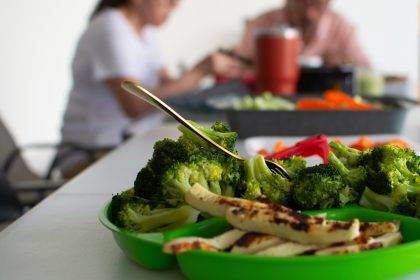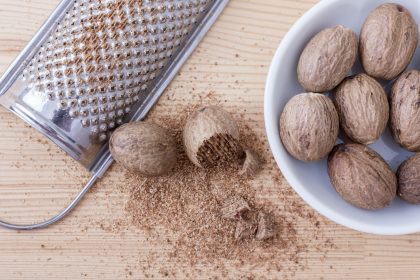When it comes to weight loss, countless diets promise rapid results through calorie restriction, macronutrient manipulation, or eliminating entire food groups. Yet one of the most powerful tools for sustainable weight management receives surprisingly little attention: dietary fiber. This remarkable nutrient not only supports digestive health but can dramatically transform your weight loss journey through multiple mechanisms that work synergistically with your body’s natural processes.
How fiber creates natural calorie control without hunger
Fiber works as a natural appetite regulator through several physiological pathways that influence both short-term meal satisfaction and longer-term hunger patterns. This effect begins immediately upon consumption as fiber-rich foods require more chewing, slowing down eating pace and allowing your brain’s satiety centers to register fullness before overconsumption occurs.
Once in your stomach, soluble fiber absorbs water and expands, creating physical fullness that triggers stretch receptors. These receptors send direct signals to your brain indicating satiation, helping you naturally consume fewer calories without feeling deprived. Studies consistently show that high-fiber meals lead to significantly reduced calorie intake at subsequent meals compared to low-fiber alternatives with identical calorie content.
Fiber extends this satiety effect over longer periods by slowing gastric emptying – the rate at which food leaves your stomach and enters your small intestine. This gradual digestion process maintains stable blood sugar levels, preventing the rapid spikes and crashes that often trigger intense hunger and cravings between meals.
Perhaps most impressively, fiber accomplishes these appetite-regulating effects while adding minimal digestible calories to your diet. While most nutrients provide 4-9 calories per gram, fiber contributes only about 2 calories per gram because your body cannot fully break it down. This creates a substantial volume of food with minimal caloric impact – precisely what makes fiber a weight loss superstar.
The surprising connection between fiber and gut health
Beyond its direct effects on appetite, fiber plays a crucial role in nurturing your gut microbiome – the vast community of bacteria residing in your digestive tract. These microorganisms influence virtually every aspect of health, including metabolism and weight regulation, through their activities and byproducts.
Fiber functions as the primary food source for beneficial gut bacteria, which ferment certain fibers to produce short-chain fatty acids (SCFAs) like butyrate, propionate, and acetate. These compounds support gut barrier integrity and reduce inflammation throughout the body – factors increasingly linked to successful weight management.
Research reveals that individuals with greater microbial diversity and higher SCFA production generally maintain healthier body weights. Conversely, imbalanced gut bacteria populations correlate strongly with obesity and metabolic disorders. By nourishing beneficial bacterial strains, fiber helps create a gut environment that supports rather than sabotages weight loss efforts.
The gut-brain connection represents another pathway through which fiber influences weight. Your gut bacteria communicate with your brain through neural, hormonal, and immune pathways, potentially affecting food cravings, mood, and even unconscious eating behaviors. Fiber-induced improvements in this communication system may help reduce emotional eating and improve adherence to healthier eating patterns.
This gut-weight connection explains why simply counting calories often proves insufficient for lasting weight management. By supporting a healthy microbiome, fiber addresses underlying biological factors that influence how your body processes and stores the calories you consume.
Fiber’s direct impact on fat storage and metabolism
Beyond its effects on appetite and gut health, fiber directly influences how your body metabolizes and stores nutrients. These mechanisms provide additional pathways through which fiber supports weight loss and metabolic health.
When you consume fiber alongside carbohydrates, it creates a physical barrier that slows carbohydrate digestion and glucose absorption. This moderated absorption prevents rapid insulin spikes that can promote fat storage. Instead, your body receives a steady stream of energy that it can use efficiently rather than store as adipose tissue.
Certain soluble fibers bind with dietary fat molecules in your digestive tract, reducing the amount of fat your body absorbs from meals. While this effect remains modest – capturing approximately 3-5% of dietary fat – it can contribute to calorie reduction without requiring conscious effort or restriction.
Fiber also appears to influence fat oxidation – your body’s ability to burn stored fat for energy. Research suggests that specific SCFAs produced during fiber fermentation may activate pathways that increase fat burning, particularly during physical activity. This metabolic enhancement helps create the calorie deficit necessary for weight loss while preserving lean muscle mass.
Additionally, high-fiber diets consistently correlate with reduced visceral fat – the dangerous abdominal fat surrounding internal organs. This specific fat depot strongly links to metabolic disorders, making fiber’s targeted effect on visceral fat particularly valuable for both aesthetic goals and overall health.
The different types of fiber and their unique benefits
Not all dietary fiber functions identically in your body. Understanding the different types and their specific benefits allows you to strategically include various fibers for maximum weight loss support.
Soluble fiber dissolves in water to form a gel-like substance that slows digestion, moderates glucose absorption, and feeds beneficial gut bacteria. Foods rich in soluble fiber include oats, barley, legumes, apples, citrus fruits, and psyllium husk. This fiber type particularly excels at improving blood sugar control and reducing cholesterol levels while creating substantial satiety.
Insoluble fiber does not dissolve in water but adds substantial bulk to stool and speeds transit time through your digestive tract. Whole grains, nuts, seeds, and most vegetable skins contain abundant insoluble fiber. While less directly connected to appetite regulation than soluble fiber, insoluble fiber contributes to overall digestive health and prevents constipation that can cause bloating and discomfort.
Fermentable fibers, which overlap with both soluble and insoluble categories, serve as premium fuel for gut bacteria. These prebiotic fibers undergo fermentation in your colon, producing beneficial SCFAs. Examples include resistant starch (found in cooled potatoes, slightly green bananas, and legumes), fructooligosaccharides (in onions, garlic, and asparagus), and inulin (in chicory root, Jerusalem artichokes, and dandelion greens).
Viscous fibers form particularly thick gels that dramatically slow digestion and create substantial fullness. Glucomannan (from konjac root), beta-glucans (in oats and barley), and psyllium represent highly viscous fibers with pronounced effects on satiety and blood sugar regulation, making them particularly valuable for weight management.
For optimal results, consume a mix of these fiber types from varied food sources rather than relying solely on supplements or a single fiber-rich food. This diversity better supports overall gut health while providing complementary benefits for weight management.
Practical ways to increase fiber for weight loss
Increasing your fiber intake need not involve drastic diet overhauls or unpalatable foods. Simple, strategic substitutions and additions can significantly boost your fiber consumption while enhancing meal satisfaction and flavor.
Start your day with fiber-rich breakfasts to establish better appetite control that extends throughout the day. Options include overnight oats with chia seeds and berries, whole grain toast with avocado, or a smoothie containing ground flaxseed and leafy greens. These morning meals provide both soluble and insoluble fibers that create lasting fullness.
Replace refined grains with whole alternatives wherever possible. Swap white rice for brown or wild varieties, choose whole wheat pasta instead of regular, and opt for 100% whole grain breads rather than white or “wheat” bread (which often contains minimal whole grains despite its name). These simple substitutions can double or triple the fiber content of standard meals.
Incorporate legumes regularly as these fiber powerhouses contain both soluble and insoluble varieties along with satiating protein. Add chickpeas to salads, replace half the meat in tacos with black beans, or enjoy lentil soup as a filling lunch option. Even small portions provide substantial fiber benefits while adding satisfying texture to meals.
Make vegetables the foundation of your plate rather than a side consideration. Fill half your plate with non-starchy vegetables at lunch and dinner, experimenting with different preparation methods to discover appealing options. Roasting, air-frying, or adding flavorful seasonings can transform even previously disliked vegetables into enjoyable foods.
Snack strategically on fiber-rich options that provide greater satiety than typical processed snacks. Fresh fruit with a small handful of nuts, raw vegetables with hummus, or air-popped popcorn (a whole grain) offer portable, convenient options that support rather than sabotage weight management goals.
Add “fiber boosters” to standard meals to increase their staying power. Sprinkle ground flaxseed on yogurt, add chia seeds to smoothies, mix psyllium into homemade baked goods, or stir pureed vegetables into sauces and soups. These simple additions significantly increase fiber content with minimal impact on taste or texture.
Avoiding common mistakes when increasing fiber
While increasing fiber intake offers numerous benefits, the transition requires certain considerations to prevent discomfort and ensure sustainable implementation.
Increase fiber gradually rather than dramatically to allow your digestive system time to adjust. Adding too much fiber too quickly can cause bloating, gas, and discomfort as your gut bacteria adapt to the new food supply. Aim to add about 5 grams of fiber weekly until reaching your target intake, giving your body time to adjust at each level.
Hydration becomes increasingly important with higher fiber consumption, particularly for insoluble fibers that absorb water in your digestive tract. Without sufficient fluid intake, this absorption can actually worsen constipation rather than relieving it. Aim for at least 64 ounces of water daily when consuming a high-fiber diet, adjusting upward with increased fiber intake or physical activity.
Balance different fiber types rather than focusing exclusively on one variety. Too much insoluble fiber without adequate soluble fiber may cause digestive discomfort, while excessive soluble fiber without insoluble counterparts can slow transit time excessively. Varied food sources naturally provide this balance.
Consider timing of fiber-rich meals relative to important activities or events. Very high-fiber meals may cause temporary bloating or gas in some individuals, particularly during the adjustment period. Schedule such meals during times when minor digestive symptoms would cause minimal disruption to your day.
Beware of heavily processed “high-fiber” products that add isolated fibers to otherwise low-nutrient foods. While these may boost fiber content numerically, they often lack the complementary nutrients and beneficial plant compounds found in naturally fiber-rich whole foods. Use such products as occasional supplements to an otherwise whole-food approach rather than primary fiber sources.
Creating a sustainable high-fiber eating pattern
The ultimate goal involves creating a sustainable eating pattern that naturally incorporates abundant fiber without requiring constant effort or calculation. This approach ensures long-term success rather than temporary changes.
Focus on overall dietary pattern rather than individual “good” or “bad” foods. A flexible approach that emphasizes fiber-rich foods while allowing occasional less optimal choices creates sustainability that strict regimens cannot match. This balanced perspective prevents the all-or-nothing thinking that derails many weight loss attempts.
Plan meals around fiber-rich foods rather than trying to add fiber as an afterthought. Begin meal planning by selecting high-fiber foundation ingredients – vegetables, whole grains, legumes, fruits – and build complete meals around these components. This approach naturally creates satisfying, nutrient-dense meals.
Expand your culinary horizons by exploring global cuisines that traditionally emphasize high-fiber ingredients. Mediterranean dishes featuring legumes and vegetables, Indian meals rich in lentils and whole grains, or Ethiopian injera (made from teff flour) provide delicious ways to increase fiber while enhancing culinary enjoyment.
Prepare fiber-rich foods in batches to improve convenience during busy periods. Cook large portions of whole grains or legumes to use throughout the week, chop vegetables in advance for quick meal assembly, or prepare overnight oats for grab-and-go breakfasts. These preparations reduce barriers to maintaining high-fiber choices during hectic times.
Listen to your body’s feedback as you increase fiber intake. Notice improvements in fullness, energy levels, and digestive function that typically accompany appropriate fiber consumption. These positive reinforcements often prove more motivating than abstract health benefits or weight loss goals.
By making fiber a central component of your weight management approach, you harness one of nature’s most effective tools for creating sustainable results. Unlike restrictive diets that fight against your body’s natural processes, fiber works with your physiology to create lasting changes that support both weight loss and overall health.
















